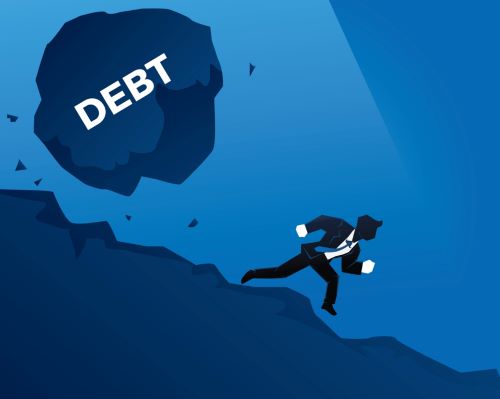

In the journey toward financial freedom, debt often appears as a formidable opponent. Like a snow-capped peak, it can seem insurmountable, chilling the bones of even the most fervent savers and spenders alike.
Still, there is a strategy that has proven effective for climbers of this financial summit which is also known as the Snowball Method. This method, akin to a small, well-rolled snowball gaining size and momentum as it descends a snowy hill, symbolizes how small, consistent actions can lead to significant outcomes in the conquest of debt.
Understanding the Snowball Method

The Snowball Method is a debt reduction strategy where you pay off bills in order of smallest to largest, regardless of interest rates.
The concept is simple: by starting small and accumulating wins, you can create momentum that propels you toward your ultimate goal—complete debt freedom. This method taps into the powerful psychological effect of achieving quick wins, which can boost morale and foster a sense of progress. You can take a peek at this link besterefinansiering.no/snøballmetoden/ if you want to discover more helpful info.
The Psychology Behind the Method
Why does the Snowball Method work so well? Behavioral economists often point to the psychological lift that ‘quick wins’ provide. When you pay off a smaller debt completely, you experience a psychological boost and a sense of accomplishment. This emotional uplift is potent—it fuels your motivation to keep going, instilling a belief that financial freedom is not only possible but within reach.
Laying the Groundwork

To embark on the snowball journey, you must first gather an accurate account of all debts owed. This initial assessment is crucial as it lays the groundwork for your strategy. List out all debts from the smallest to the largest balance without regard to interest rates. This list will serve as your path down the mountain, guiding you on where to step next.
Starting the Snowball
Once your debts are laid bare, the next step is to maintain minimum payments on all your debts except for the smallest one. It’s against this smallest debt that you’ll hurl every extra penny you can muster. Cut back on non-essential expenses, pick up extra work, sell items you no longer need—every extra dollar is ammunition for your snowball.
Gaining Momentum
As you pay off the first debt, you don’t pocket the extra money that has been liberated from that paid-off bill. Instead, you add that former payment to the minimum payment of the next smallest debt. This increased payment accelerates the rate at which you can conquer the next debt. With each debt eliminated, the ‘snowball’ grows larger and larger, allowing you to plow through your debts with increasing velocity.
The Role of Budgeting

An essential component of the Snowball Method is effective budgeting. You need a budget that not only takes care of your essential needs but also maximizes your debt repayment. This means being meticulous about where your money is going and being prepared to make sacrifices. Whether it’s foregoing dining out, limiting leisure activities, or opting for less expensive alternatives, these choices allow the snowball to gather size.
The Power of Sacrifice
Sacrifice is the wind that propels the snowball down the hill. Temporary sacrifices lead to long-term gains. Each sacrifice is not just a saving—it’s a strategic move towards a life free of debt. This requires patience and discipline, as the fruits of these sacrifices will not be enjoyed immediately, but they are integral to the snowball’s success.
Consistency is Key
As with any method, the Snowball Method demands consistency. This is not a sprint; it is a marathon—a consistent, focused effort that gradually leads to results. Debt repayment using the snowball method can take months or even years, depending on the amount of debt you have. The key is to remain consistent, to keep pushing the snowball forward, even when progress seems slow.
Navigating Setbacks
The path to debt freedom is seldom a straight line. There will be setbacks—unexpected expenses or financial emergencies that threaten to halt the snowball’s progress. The key is to manage these without accruing new debt. This might mean adjusting your budget, establishing an emergency fund before starting the debt snowball, or finding creative ways to overcome financial hurdles without borrowing more.
Life After Debt
What happens when the last debt has been paid off, when the snowball has finally come to a rest at the foot of the mountain? The discipline and habits formed during the snowball method don’t end. They transition into wealth-building behaviors. The same principles apply—consistent savings, living below your means, and investing in your future.
A Personal Journey
It’s important to note that the Snowball Method is not just a financial strategy; it’s a personal journey. It’s about understanding your relationship with money, recognizing the patterns that led to debt, and taking control of your financial destiny. This method offers more than just a debt-free life; it provides a blueprint for financial discipline that can benefit every aspect of your financial future.
How to Avoid Getting Into Too Much Debt?
It can be hard to get through modern life’s financial waters without getting into a lot of debt. There’s a lot of pressure on people to live beyond their means, and credit cards and loans can make it easy to get into deep financial trouble.
However, if you plan ahead, are disciplined, and stick to your plan, you don’t have to sail into the storm of excessive debt. These useful tips will help you keep your finances in order and keep you from taking on too much debt.
Budgeting
The cornerstone of any strategy to avoid debt is a solid and realistic budget. Just as a compass guides a ship through treacherous waters, a budget directs your spending, ensuring that you don’t drift into the red. Start by tracking every penny you spend. Knowledge is power, and understanding where your money is going is the first step to controlling it.
Make a budget that accounts for all your necessities like housing, food, and transportation, as well as savings. Stick to this budget religiously, treating it as the map to your financial treasure: a life free of crippling debt.
Emergency Fund
The unexpected is a constant in life. Without preparation, unforeseen expenses can quickly throw you off course and into the sea of debt. An emergency fund acts as a life raft, providing a buffer between you and the need to borrow.
Aim to save at least three to six months’ worth of living expenses. This fund will cover you in case of medical emergencies, job loss, or urgent home repairs, preventing the need to take on debt to manage these situations.
Credit Wisely
Credit cards and loans can either be a powerful tool or a destructive force, so make sure to use your credit wisely. If you choose to have a credit card, opt for one with benefits suited to your lifestyle and spend only what you can pay off in full each month. This avoids costly interest payments and keeps your debt manageable.
Before taking out a loan, evaluate its necessity and your ability to repay it. Never take out a loan to spend on anything luxurious; instead, save up for something useful like a college degree, a down payment on a home, or the launch of a business.
Understand Wants Versus Needs
In a world of constant advertising and social media envy, distinguishing between wants and needs is crucial. Needs are essentials for survival and well-being—food, shelter, basic clothing, and healthcare. Wants, however, are the extras, the things that make life more enjoyable but are not essential.
Before making a purchase, ask yourself if it’s a want or a need. By prioritizing needs and being mindful of the wants you indulge in, you can steer clear of unnecessary debt.
Smart Spending
Just as a skillful sailor uses the wind to propel the ship forward, smart spending can help push you towards your financial goals without the need for debt. Look for ways to stretch your dollars. Use coupons, wait for sales, buy in bulk, and choose generic brands over name brands when possible. Each cost-saving measure is a gust of wind in your sails, moving you forward without borrowing.
Invest in Your Future
Investing may seem like a task for those already financially secure, but even a small investment can be a deterrent to debt. By setting money aside in a retirement account or investing in a diversified portfolio, you’re planning for future expenses and reducing the temptation to rely on debt for unexpected costs later in life.
Avoiding the Debt Tempest
Consistently review and adjust your financial plans and budgets. Life changes, and so will your financial needs and goals. Regularly checking your financial health allows you to make necessary changes before debt becomes an issue. Keep a close watch on your spending habits, and don’t let small indulgences turn into large debts.
Educate Yourself
Understanding financial concepts can seem overwhelming, but educating yourself about interest rates, loan terms, and financial products can save you from making decisions that result in unmanageable debt. Take advantage of free educational resources online, attend workshops, or consult with a financial advisor to make better financial decisions in the future.


